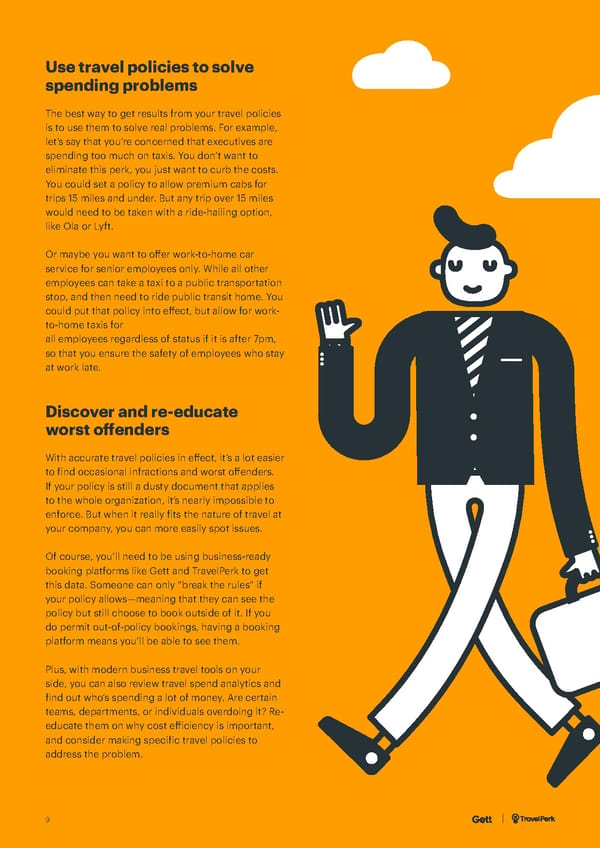Use travel policies to solve spending problems The best way to get results from your travel policies is to use them to solve real problems. For example, let’s say that you’re concerned that executives are spending too much on taxis. You don’t want to eliminate this perk, you just want to curb the costs. You could set a policy to allow premium cabs for trips 15 miles and under. But any trip over 15 miles would need to be taken with a ride-hailing option, like Ola or Lyft. Or maybe you want to offer work-to-home car service for senior employees only. While all other employees can take a taxi to a public transportation stop, and then need to ride public transit home. You could put that policy into effect, but allow for work- to-home taxis for all employees regardless of status if it is after 7pm, so that you ensure the safety of employees who stay at work late. Discover and re-educate worst offenders With accurate travel policies in effect, it’s a lot easier to find occasional infractions and worst offenders. If your policy is still a dusty document that applies to the whole organization, it’s nearly impossible to enforce. But when it really fits the nature of travel at your company, you can more easily spot issues. Of course, you’ll need to be using business-ready booking platforms like Gett and TravelPerk to get this data. Someone can only “break the rules” if your policy allows—meaning that they can see the policy but still choose to book outside of it. If you do permit out-of-policy bookings, having a booking platform means you’ll be able to see them. Plus, with modern business travel tools on your side, you can also review travel spend analytics and find out who’s spending a lot of money. Are certain teams, departments, or individuals overdoing it? Re- educate them on why cost efficiency is important, and consider making specific travel policies to address the problem. 9
 Keep business travel costs low Page 8 Page 10
Keep business travel costs low Page 8 Page 10